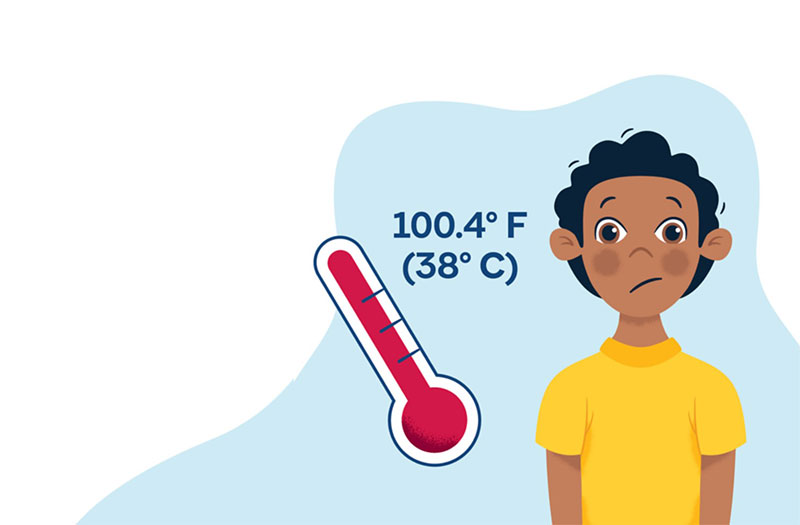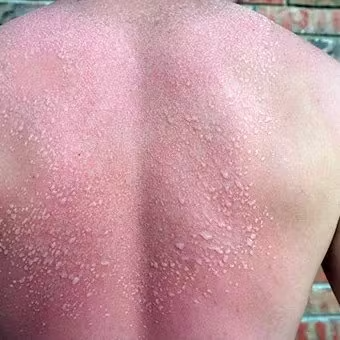Disclaimer: This material is for educational purposes only. You, the reader, assume full responsibility for how you choose to use it. It is not intended to provide medical advice, diagnosis or treatment, nor does it replace the advice or counsel of a doctor or health care professional. Reference to a specific commercial product or service does not imply endorsement or recommendation of that product or service by CPCMG.
What is a fever?
-
 A fever is when the body’s temperature is high, usually due to an illness.
A fever is when the body’s temperature is high, usually due to an illness.- A true fever is usually a temperature that is higher than 100.4°F (38°C).
- Normal body temperatures range with age and time of day.
- The normal range is usually from: 97.5°F to 99.5°F.
- It can be affected by sun exposure, recent activities, and clothing layers.
- When your child has a fever due to illness, it is a sign that your child’s immune system is working.
- The fever is the body’s way to fight an infection and heal itself.
- A fever cannot cause brain damage.
- The biggest risk with fever is dehydration.
- So, a fever is usually helpful!
What are the symptoms of fever?
- Your child may sweat, look flushed/pink, or complain of feeling hot.
- Your child may seem irritable or fussy.
- Your child may want to drink more than usual.
- Your child may feel warm to the touch.
- Your child may want to rest more and have a decrease in appetite.
- Your child may also have signs of a cold (cough, congestion), or complain of pain somewhere in their body.
- Your child may have other symptoms like vomiting, diarrhea, or a rash.
- A fever alone can cause a rash, often called a “heat rash” or prickly skin.
- A fever may cause a seizure in some children.
- Some illnesses can cause seizures.
- Some families have a history of seizures with fever.
- This article can provide more information and details about febrile seizures.

What is the treatment for a fever?
- If your child is drinking well and overall comfortable, it is best not to treat the fever.
- If your child is uncomfortable, fussy, irritable, and drinking less, it is a good idea to treat the fever.
- Keep your child well hydrated.
- Cool baths or compresses may help.
- Minimize clothing layers as much as possible.
- If old enough, allowing your child to suck on ice may help.
- Cold fluids and icy treats like popsicles, ice cream (if permissible) may help and when age appropriate.
- Keep your child out of the sun.
- Try to keep your child in a cool place.
How do I prevent a fever?
- Keep your child up to date on their vaccines.
- Avoid sick contacts.
- Encourage lots of hand washing.
- Clean all high touch surfaces frequently.
- Avoid sharing any food, drink or utensils.
When to call your child’s provider:
- Your child is less than 2 months old.
- You are concerned your child is not staying hydrated.
- Fever has lasted for five days in a row, or it went away for 1 or 2 days and then returned.
- There are other worrisome symptoms with the fever.
- Your child is not up to date with their vaccines.
- Your child is having trouble breathing.
- Your child is getting worse.
- You have any other concerns or think your child needs to be seen.
This publication was adapted from information within American Academy of Pediatrics Patient Education Handouts, UpToDate Guidelines and Healthychildren.org
Reviewed by: TT D.O, AR D.O. | 01/2024


